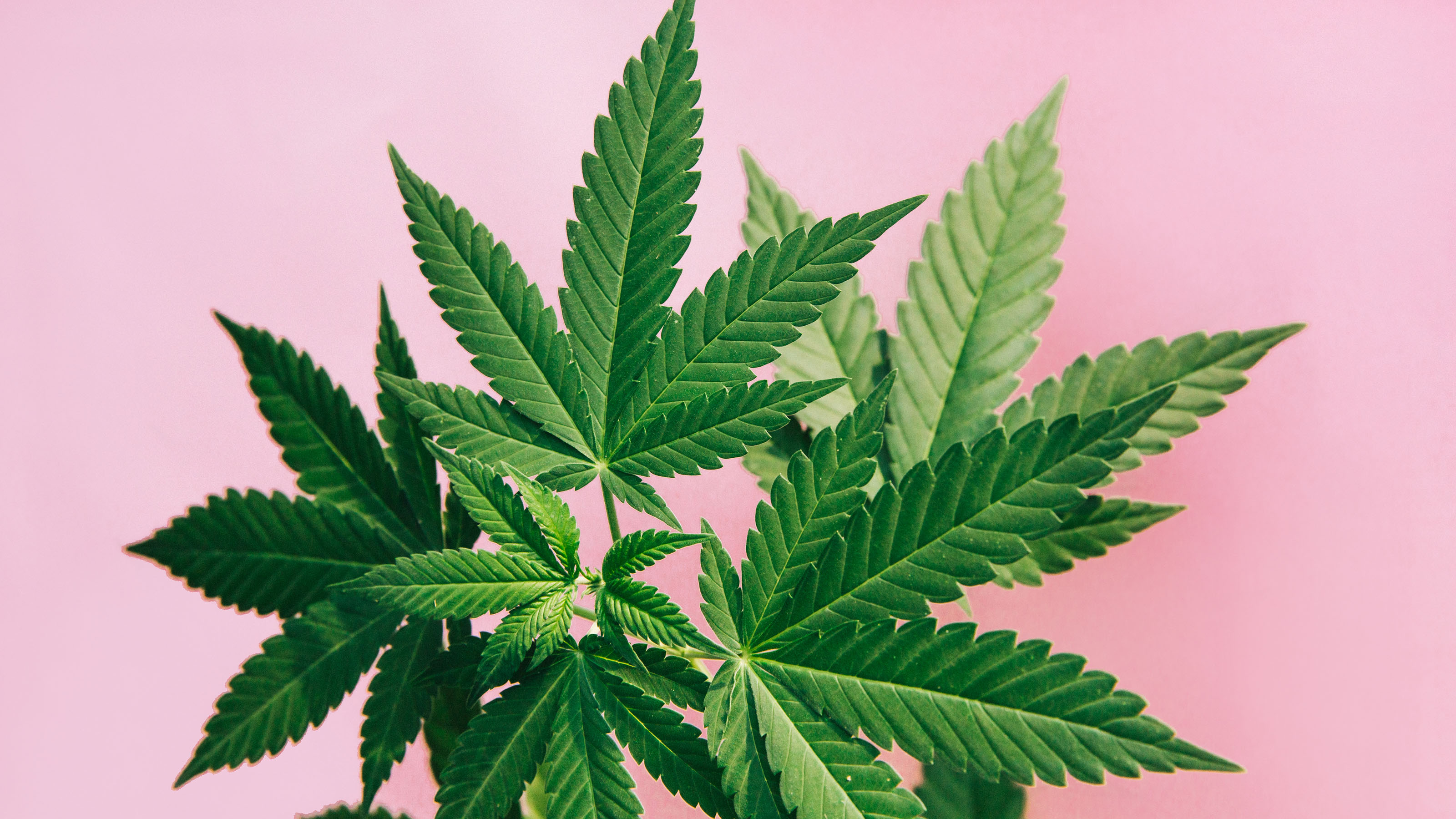Buying Marijuana in These States Helps Fight Substance Abuse
Purchasing legal marijuana is helping to fight substance abuse in some states because of programs funded by marijuana tax revenue.


Is using marijuana considered substance abuse? Maybe in some places. But if you use legal marijuana, you might be able to help fight substance abuse. Several states use marijuana tax revenue to fund state-sponsored drug treatment and education programs. These drug treatment funding measures, which are typically included in state marijuana legislation, are becoming more common as states rake in billions of dollars in tax revenue each year from legal cannabis sales.
(Note: The terms cannabis and marijuana are used interchangeably in this article.)
Marijuana Tax Revenue to Fight Substance Abuse
It’s no secret that substance abuse is a deadly problem in the U.S. According to the National Institute on Drug Abuse (NIDA), a little over 20 million people were diagnosed with a substance abuse disorder in 2019. Less than 11% of those individuals received treatment. And in 2021, 106,699 people died of drug overdoses, according to the CDC.
From just $107.88 $24.99 for Kiplinger Personal Finance
Become a smarter, better informed investor. Subscribe from just $107.88 $24.99, plus get up to 4 Special Issues

Sign up for Kiplinger’s Free Newsletters
Profit and prosper with the best of expert advice on investing, taxes, retirement, personal finance and more - straight to your e-mail.
Profit and prosper with the best of expert advice - straight to your e-mail.
Legalizing cannabis in some states has provided new opportunities for fighting the drug crisis. For example, a number of states are using some of the revenue from cannabis and marijuana taxes to fund after-school programs. A major goal of these programs is to prevent substance use by minors. But that's just one example. Read on to see which other state-funded programs you might indirectly support when you visit the dispensary and make a legal marijuana purchase.
Substance Abuse In Alaska
Marijuana excise taxes brought in about $30 million for Alaska in 2021, accounting for more than 3% of the state’s total tax revenue. Alaska uses much of this revenue to fund beneficial community programs, including programs to prevent marijuana use by minors.
According to the Alaska Department of Health, a portion of marijuana excise taxes go to the state's Marijuana Education and Treatment Fund. This fund provides assistance for after-school programs. The programs are meant to help prevent the misuse of marijuana and other substances. Alaska supports other community services with marijuana tax revenue, too.
- The Council on Domestic Violence and Assault received $2 million from fiscal year 2022 revenue.
- The Alaska Department of Corrections uses its funding to support the community through health care, substance abuse prevention, education (for all ages), and sexual abuse prevention and education programs.
The Marijuana Education and Treatment Fund benefits communities in the state, but the fund isn't without flaws. Although some of the marijuana tax revenue is dedicated to specific uses, according to press reports funding isn't always allocated for every qualified department. One program in the Alaska Division of Public Health that works to educate the public about marijuana use reportedly received no additional funding as of 2022.
Impaired Driving In California
California collected $108 million in cannabis excise tax in the fourth quarter of 2022 alone. That doesn’t include the $113.6 million the state received from sales tax revenue. California uses money from cannabis taxes to fund public safety grants. The 2023/2024 grant cycle is focused largely on fighting impaired driving, including community-based education initiatives that help reduce driving while under the influence of substances.
Some critics argue that using a portion of cannabis tax revenue to fund police departments doesn't prevent irresponsible drug use. The argument is that police funding increases non-violent, drug-related arrests instead.
In previous cycles, California awarded grants that support substance abuse prevention in other ways.
- In 2022, California awarded $58.5 million to 61 community organizations that help to prevent youth substance abuse.
- Grants in 2020 included research grants for studying cannabis-related substance disorders and THC potency effects on health.
Colorado Marijuana Tax Fund
Most of Colorado’s marijuana revenue (71.85%) is distributed to the state's Marijuana Tax Cash Fund. This fund is used for substance abuse prevention and treatment programs as well as other essential services, including:
- Health care
- Law enforcement
- Health education
Colorado also uses marijuana tax revenue to repair and build new Colorado public schools.
Illinois Youth Programs
Legal cannabis sales raked in $445 million for Illinois in 2022, a 50% increase from the previous year. Illinois law mandates that 25% of this tax revenue be allocated to economically distressed communities and those impacted the most by violence and the war on drugs. This funding goes to the state's Restore, Reinvest, and Renew (R3) program. That program focuses on civil legal aid, economic development, reentry, violence prevention, and youth development. Previous R3 grants have focused on serving Illinois youth.
- East St. Louis Youth Development Alliance used R3 funding to increase engagement in out-of-school youth programs.
- Springfield Urban League used R3 funding to prepare older youth for the workforce and help them overcome challenges resulting from poverty and crime exposure.
Montana Behavioral Health
Montana allocates $6 million of marijuana tax revenue to Healing and Ending Addiction through Recovery and Treatment (HEART). The HEART fund also receives federal funding, allowing HEART to dedicate a total of $25 million each year to support behavioral health and treatment programs in the state. Some of the funding has improved Medicaid services and tribal communities.
- Medicaid members can now receive inpatient drug treatment regardless of age.
- Tribal governments received more than $1 million to assist with treatment, recovery, and prevention services.
- $2.7 million has been allocated for jail-based behavioral health and other care services.
New York Cannabis Education
New York allocates 20% of cannabis revenue to the Drug Treatment and Public Education Fund. Among other things, this fund supports school-based substance abuse prevention and a campaign to educate the public about responsible cannabis use and safe storage. An additional 40% of the tax revenue is directed to a Community Grants Reinvestment Fund. This fund supports several community improvement initiatives, including:
- Substance abuse treatment
- Childcare
- Housing
- Financial literacy
- Mental health treatment
Additionally, 5% of medical cannabis excise taxes are allocated for further drug abuse prevention, counseling, and treatment services.
Washington Health Care
Nearly 50% of marijuana tax revenue in Washington is allocated to providing healthcare to those in need, such as those without health insurance coverage, according to the Washington State Treasurer. The state uses taxes from liquor to fund initiatives, too. For fiscal year 2022, the Liquor and Cannabis Board allocated $53 million to the Washington State Healthcare Authority (HCA). In addition to funding substance abuse treatment, eligible individuals can receive access to other essential services:
- Children's long-term mental health inpatient program
- Recovery support
- Essential healthcare services (dental, primary care, etc.)
Other Uses for Marijuana Tax Revenue
As of April 2023, 38 states permit medical cannabis use, and 22 states allow other marijuana use to some extent, according to the National Conference of State Legislatures (NCSL). Fighting substance abuse through treatment, prevention, and education is popular, but other states are putting marijuana tax revenue to good use, too.
For example, Nevada dedicates part of its cannabis tax revenue to homelessness programs and public schools. Massachusetts dedicates a portion of its marijuana tax revenue to public schools and improving public transportation.
So, even if your state doesn’t specifically use marijuana taxes to fight substance abuse, there’s still a chance your purchase could benefit the community (as long as you buy marijuana legally).
Profit and prosper with the best of Kiplinger's advice on investing, taxes, retirement, personal finance and much more. Delivered daily. Enter your email in the box and click Sign Me Up.

Katelyn has more than 6 years of experience working in tax and finance. While she specialized in tax content while working at Kiplinger from 2023 to 2024, Katelyn has also written for digital publications on topics including insurance, retirement, and financial planning and had financial advice commissioned by national print publications. She believes knowledge is the key to success and enjoys providing content that educates and informs.
-
 Tip: Ways to Track Your Credit Card Rewards
Tip: Ways to Track Your Credit Card RewardsHere are the best strategies and apps to help you stay current with your credit card rewards.
-
 How New Investors Can Pick Their Perfect Portfolio, According to a Pro
How New Investors Can Pick Their Perfect Portfolio, According to a ProSee what Cullen Roche has to say about finding your perfect portfolio as a new investor and his two-word answer on where he thinks the stock market is headed in 2026.
-
 HNW Retirees: Don't Overlook The Benefits of Social Security
HNW Retirees: Don't Overlook The Benefits of Social SecurityWealthy retirees often overlook Social Security. But timed properly, it can drive tax efficiency, keep Medicare costs in check and strengthen your legacy.